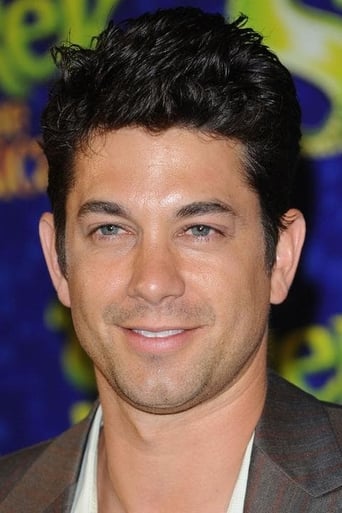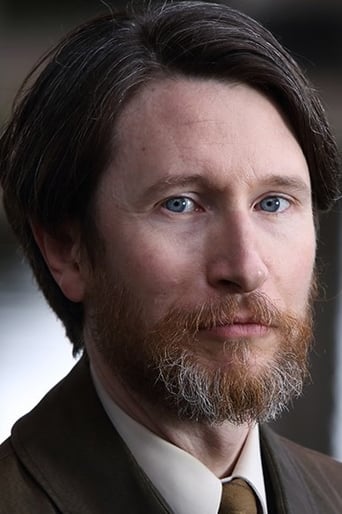SmugKitZine
Tied for the best movie I have ever seen
Freaktana
A Major Disappointment
Benas Mcloughlin
Worth seeing just to witness how winsome it is.
bob the moo
It is 1913 and ballet dancers are the rock stars of their day. One of the most famous in his area is Nijinski, who has been tasked by his manager Sergei Diaghilev to choreograph a new work for presentation on the stage. The public and the press know little about it except that it is to be a new composition from Stravinsky – expectations are high. Behind the scenes though, people are nervous because musically it is totally against all accepted standards of rhythm and, to put it crudely, it sounds like one big noise. Making the show even more of a risky proposition is the fact that Nijinski's choreography is deliberately jerky and opposite to the flowing motion of traditional ballet.As a previous reviewer has said, this is the sort of film the BBC should be making – stuff that other networks don't do because it will never get ratings, which they need to get the advertisers coming in. However worthy this film is though, I must confess that I felt it fell awkwardly between two stools and didn't manage to be detailed enough for an elite audience, or informative enough for appreciation by a wider audience. To make sure you know which camp I fall into, it should be said that I am not a ballet fan (although I will always give dance a look) and knew nothing of this event until I watched this film and did some reading on my own. The problem with the whole film to me was that it didn't help me understand why I should be caring about what I'm watching. This is primarily evident in the failure to convey just how shocking it would have been to the audience of the period. I could see that it was jerky motion and strange music but I didn't "get" the feeling that everyone involved felt they were taking a massive risk.Likewise, the riot itself is presented in such a way that I could not understand why this event was sufficiently significant to be recreated almost 100 years later. The "riot" is presented as booing and jeering which, I suppose is unusual for a ballet but worthy of historical record? Others have told me that there was much more to it than this but why then did the film not bring this out. I have seen people booing films, walking out of films and (on this site) the critical savaging of anything new is a daily occurrence. Similarly I didn't think the film did well in regards what happened next – again, there must have been sufficient ramifications to make it become recorded in history? Don't get me wrong, the film is still interesting and does serve as a capture of the ballet itself but with the film probably already appealing to a small portion of the market, which make it more select by failing to engage those who may not know it all yet? The fault probably lies with Elyot's script but Wilson's direction doesn't help as simply having a few scenes of traditional ballet doesn't suggest that doing the Rite was going to bring the house down. The cast are sturdy enough to do the job but cannot do the job botched by the writer. Garcia is passionate, McArdle is strangely comic, Jennings is OK and Jones' short time on screen made me wonder why he bothered. The dancers are impressive and it may well look ugly and graceless but their ability to control their bodies in this way is still worth seeing.Overall a strange film that will probably not appeal to that many people – not because it is too highbrow but just because it doesn't actually tell the story that well. I now know there was some trouble at a ballet performance in 1913 but I am none the wiser as to the wider impact it had, what happened that night that made it so important or the reasons why it was worth filling 90 minutes of the schedules. Interesting and maybe worth seeing for the recreation of the Right of Spring but somehow it just didn't manage to convey anything else with any context or passion.
jimbomacleod
Time was if the BBC wanted to put on The Rite Of Spring they would simply have done so. That kind of unashamed highbrow viewing for minority audiences has become decidedly unfashionable, however, as the Beeb scrambles for ratings to help justify its ever-increasing demands for public funding. But this is a good try with a difficult work. Even today, most people would find Stravinsky's harmonic language in the Rite rather tough going, and Nijinski's violent fractured choreography still challenges expectations nurtured on the conventions of classical ballet. But by setting a performance of the whole ballet (yes, folks, not a note missed) in the dual contexts of its preparation and notorious reception, the Beeb manages to smuggle through a performance of the Rite in the guise of TV drama. To be sure the settings are not entirely satisfactory. There are too many posturing luvvies, Stravinsky might as well have been played by Ronnie Corbett, and the audience jeers and catcalls are small beer compared to the actual event at which the police had to be called in to restore order. For quite long sections of the ballet however the audience is almost completely quiet, and it can be enjoyed in peace. In particular the closing sections of the sacrifice are (a few cutaways aside) almost audience-free - not historically credible, as the audience would have been going wild at this point. It appears to have been assumed that, however tough the idiom, the TV audience would enjoy watching a virgin dance herself to death undistracted. Fair enough - I know I did.As drama it is above average, though not by much. As a presentation of the original performance of the Rite, it is magnificent. I only wish they had created a straight performance as a by-product for DVD release. Perhaps they will....
sue-276
I fell into this on BBC-2 while channel-hopping. Absolutely fascinating and thoroughly enjoyable. Maybe the drama was the usual period stuff but with the story of the creation, rehearsal and performance of the Right of Spring, it was captivating. A really class production with the Finnish National Ballet with Zenaida Yanowsky and the BBC Symphony Orchestra. We see the tensions between the dancer (Najinsky) and composer (Stravinsky) during the creation. Tension gives way to excitement and confidence during rehearsals. And then bafflement at the public reaction. Always the way with the new? Definitely worth watching for the music and dance.





